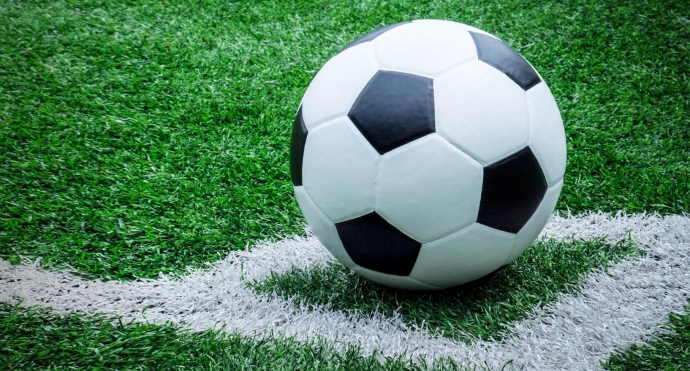Choosing the Right Size Football
Football continues to demonstrate its allure as the king of sports in Vietnam, captivating thousands of passionate fans. Its popularity is further evidenced by its inclusion in most educational institutions as a sport for physical education.
Many children are participating in
new soccer prediction academies to learn and enhance their skills.
Choosing the appropriate size football for matches plays a crucial role. In this article, Decathlon will reveal the essential information you need to know about standard football sizes based on players' ages. With this knowledge, you can make informed choices for future matches or training sessions.
Why is it Important to Choose the Right Size Football for Each Age Group?
On the market, various sizes of footballs are available. Football sizes gradually change according to the age of the players because as children grow older and become more skilled, they also aim for effectiveness and safety during play.
Football associations worldwide have set standards stipulating that young players should only use smaller-sized balls to limit the risk of injuries during training and matches. Only by finding a ball suitable for their age and skill level can players truly turn football into a memorable experience.
When using an adult-sized ball, a three-year-old child cannot fully showcase their abilities and enjoy the joy of playing football. Moreover, an appropriately sized ball helps reduce the risk of ligament and tendon injuries, which often occur when players use balls larger than their bodies.

Therefore, before embarking on the path to professional football, it's crucial to select a ball of the right size. This is a fundamental prerequisite.
Current Standard Football Sizes
Many people start playing football at a very young age. However, for others, this passion blooms later. Football sizes at different stages help develop various skills. Therefore, there are many football sizes for different age groups:
Size 1 Football
Also known as "Mini" or "Miniature," size 1 footballs essentially have a shape like a regular dodecahedron. The circumference of the ball is 18-20 inches (equivalent to 46 – 51 cm).
Now, let's explore the various football sizes available on the market today with Decathlon and learn some tips for choosing the right size and weight of the ball.
Size 1 balls are suitable for all ages. They are lightweight, making them ideal for novice players who are in the process of training and honing their skills. Or if you are learning to control the ball with your feet and getting acquainted with larger balls, size 1 is the perfect choice. This type of ball is not used in competitive matches.
Size 2 Football
Size 2 balls have a circumference of 22 inches (about 56 cm) and weigh 280g. They are also known as "Midi." Due to their lightweight nature, size 2 balls are often chosen for children aged 3-6. Children of this age are at risk of injury if they play with heavier balls according to the standard.
If you are aiming to train ball control skills, size 2 is the perfect choice. Generally, when using this type of ball in training, you will be able to control the ball more proficiently, thereby gaining confidence to play with larger standard-sized balls.
Size 3 Football
Size 3 footballs have a circumference of 24 inches and weigh between 311g – 340g. This is the smallest official football size used in matches. Size 3 is the standard size, suitable for all ages, from toddlers learning to walk to 6-9-year-olds who are just starting to engage in professional football.
However, despite
betting tips in football slightly more expensive than traditional footballs, size 3 footballs are capable of producing better flight paths, offering reliability and optimal control. With sturdy construction and appropriate technical specifications, size 3 balls are recognized for their excellence.
Size 4 Football
With this size, footballs come in a variety of weights and sizes. Size 4 footballs have a circumference ranging from 25-26 inches and weigh between 340g-369g, suitable for children aged 9 to 11.
Moreover, an interesting fact is that size 4 balls are three times larger than traditional balls. These balls have low bounce, suitable for playing on hard surfaces, especially indoor playgrounds or tiled floors. Nowadays, size 4 balls are widely used in Futsal.
Size 5 Football
Size 5 footballs have a circumference of 27-28 inches, meeting FIFA football standards. With a weight of 397g – 453g, size 5 footballs are suitable for players over 12 years old.
This type of ball is used in all tournaments worldwide and is also popular in youth matches.
What Makes a Football FIFA Standard?
The FIFA World Cup is the biggest football event in the world. At the 1970 World Cup, Adidas introduced the iconic size 5 ball named Telstar. Since then, Adidas has been responsible for supplying balls for the World Cup.
Size 5 footballs meet FIFA football standards with a circumference of 27-28 inches, weighing 397g – 453g, pressure of about 8.5-15.6 PSI, and a diameter of 8.6-9 inches (22-23 cm).
Considerations When Choosing a Football
When selecting a football, it is essential to determine the standard football size according to the size chart. Because footballs come in various sizes, and size is closely related to the weight of the ball.
When choosing the ball size, you should consider age, skill level, and purpose of use. Beginners should choose a ball size suitable for their age, then gradually transition to larger balls corresponding to the skills they have accumulated.
Conclusion
Football is not only a form of entertainment but
best football prediction app also a fantastic physical activity that helps maintain physical fitness and flexibility with regular training.
Decathlon hopes that this article can provide you with useful information about football and help you choose the most suitable standard football size.